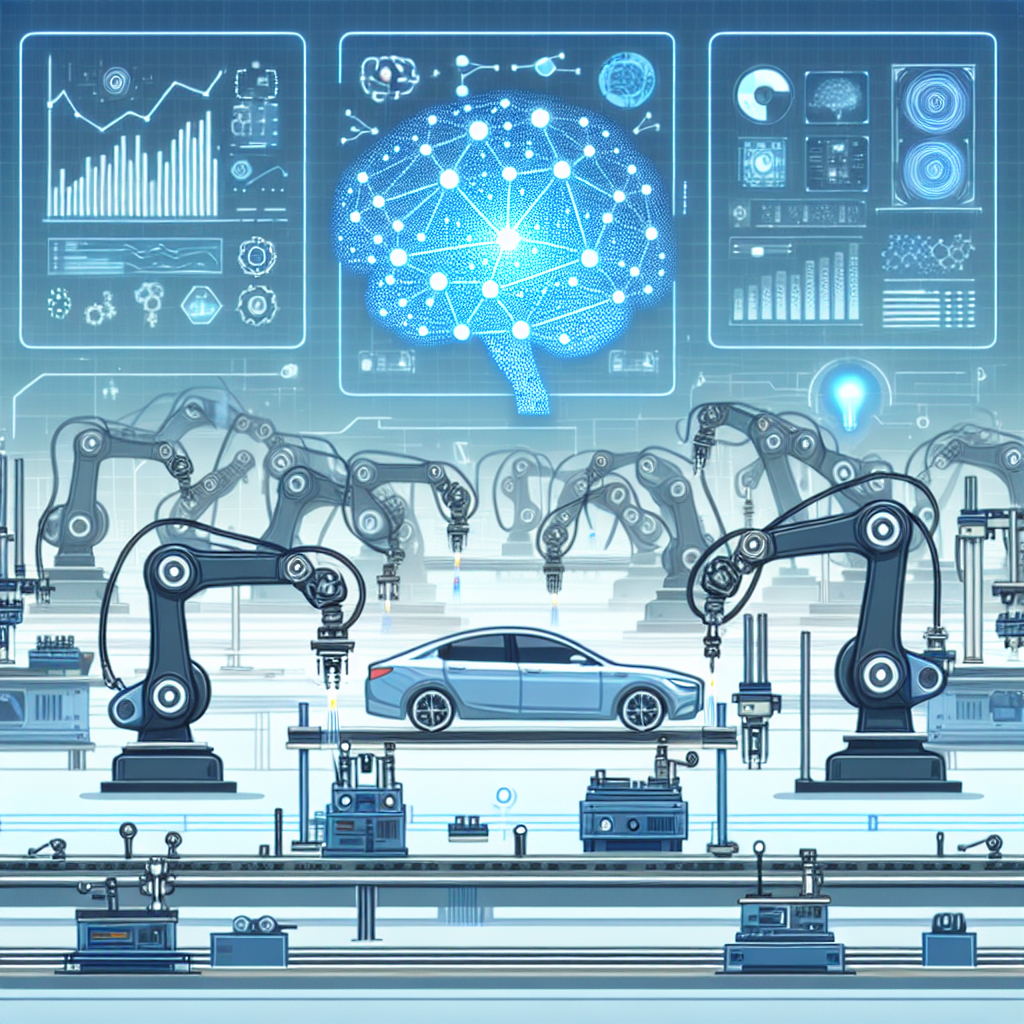The Intersection of AI and Robotics in Manufacturing
In recent years, the intersection of artificial intelligence (AI) and robotics has been transforming the manufacturing industry. The combination of AI and robotics has the potential to optimize production processes, increase efficiency, improve quality control, and reduce costs. As technology continues to advance, the integration of AI and robotics in manufacturing is becoming more prevalent and essential for companies to stay competitive in a rapidly evolving market.
AI in Manufacturing
AI is revolutionizing the manufacturing industry by enabling machines to perform tasks that were previously only possible for humans. With AI technology, machines can now analyze data, make decisions, and adapt to changing conditions, all in real-time. This level of intelligence allows manufacturers to improve their production processes, increase output, and reduce errors.
One of the key applications of AI in manufacturing is predictive maintenance. By using AI algorithms to analyze data from sensors and machines, manufacturers can predict when equipment is likely to fail and schedule maintenance before a breakdown occurs. This proactive approach to maintenance can reduce downtime, increase productivity, and extend the lifespan of equipment.
AI is also being used for quality control in manufacturing. Machine learning algorithms can analyze images of products to detect defects or inconsistencies, ensuring that only high-quality products are shipped to customers. This level of precision and accuracy in quality control can help manufacturers reduce waste, improve customer satisfaction, and maintain a competitive edge in the market.
Robotics in Manufacturing
Robotics has been a staple in manufacturing for decades, but recent advancements in robotics technology have made robots more versatile, efficient, and cost-effective than ever before. With the integration of AI, robots are now capable of performing complex tasks with speed and accuracy, making them invaluable assets in modern manufacturing facilities.
Robots are being used in a variety of applications in manufacturing, from assembly and welding to packaging and material handling. By automating repetitive and labor-intensive tasks, robots can increase production output, improve efficiency, and reduce the risk of human error. This level of automation allows manufacturers to streamline their operations, reduce costs, and stay competitive in a global market.
The Intersection of AI and Robotics
The intersection of AI and robotics in manufacturing is where the true potential of these technologies is realized. By combining AI’s intelligence with robotics’ physical capabilities, manufacturers can create autonomous systems that can learn, adapt, and make decisions on their own. These AI-powered robots can work alongside humans, collaborating in ways that were previously unimaginable.
One of the key benefits of AI-powered robotics in manufacturing is the ability to optimize production processes. By using AI algorithms to analyze data from sensors and machines, robots can identify inefficiencies, make adjustments in real-time, and continuously improve performance. This level of optimization can help manufacturers reduce waste, increase productivity, and meet the demands of a rapidly changing market.
Another benefit of AI-powered robotics in manufacturing is the ability to customize products on a mass scale. By using AI algorithms to analyze customer data and preferences, robots can produce personalized products with speed and precision. This level of customization can help manufacturers differentiate their products, attract new customers, and increase market share.
FAQs
Q: What are the key challenges of integrating AI and robotics in manufacturing?
A: One of the key challenges of integrating AI and robotics in manufacturing is the initial cost of implementation. AI and robotics technology can be expensive to acquire and deploy, requiring significant investment from manufacturers. Additionally, there may be resistance from employees who fear that automation will replace their jobs. Manufacturers must address these challenges by demonstrating the benefits of AI-powered robotics, providing training for employees, and ensuring a smooth transition to automated systems.
Q: How can manufacturers ensure the safety of AI-powered robots in the workplace?
A: Safety is a top priority when integrating AI-powered robots into the manufacturing environment. Manufacturers must conduct thorough risk assessments, implement safety protocols, and provide training for employees working alongside robots. Additionally, robots can be equipped with sensors and cameras to detect obstacles and avoid collisions, ensuring a safe working environment for all.
Q: What are the potential future developments in AI and robotics in manufacturing?
A: The future of AI and robotics in manufacturing is limitless, with endless possibilities for innovation and advancement. One potential development is the use of collaborative robots, or cobots, that can work alongside humans in a shared workspace. These cobots can assist with tasks that require human dexterity and flexibility, expanding the capabilities of automated systems. Additionally, advancements in AI algorithms and machine learning will continue to improve the intelligence and adaptability of robots, making them even more valuable assets in the manufacturing industry.
In conclusion, the intersection of AI and robotics in manufacturing is revolutionizing the industry, enabling manufacturers to optimize production processes, increase efficiency, improve quality control, and reduce costs. By harnessing the power of AI-powered robots, manufacturers can stay competitive in a rapidly evolving market and meet the demands of a digital age. As technology continues to advance, the integration of AI and robotics in manufacturing will only continue to grow, shaping the future of manufacturing for years to come.

